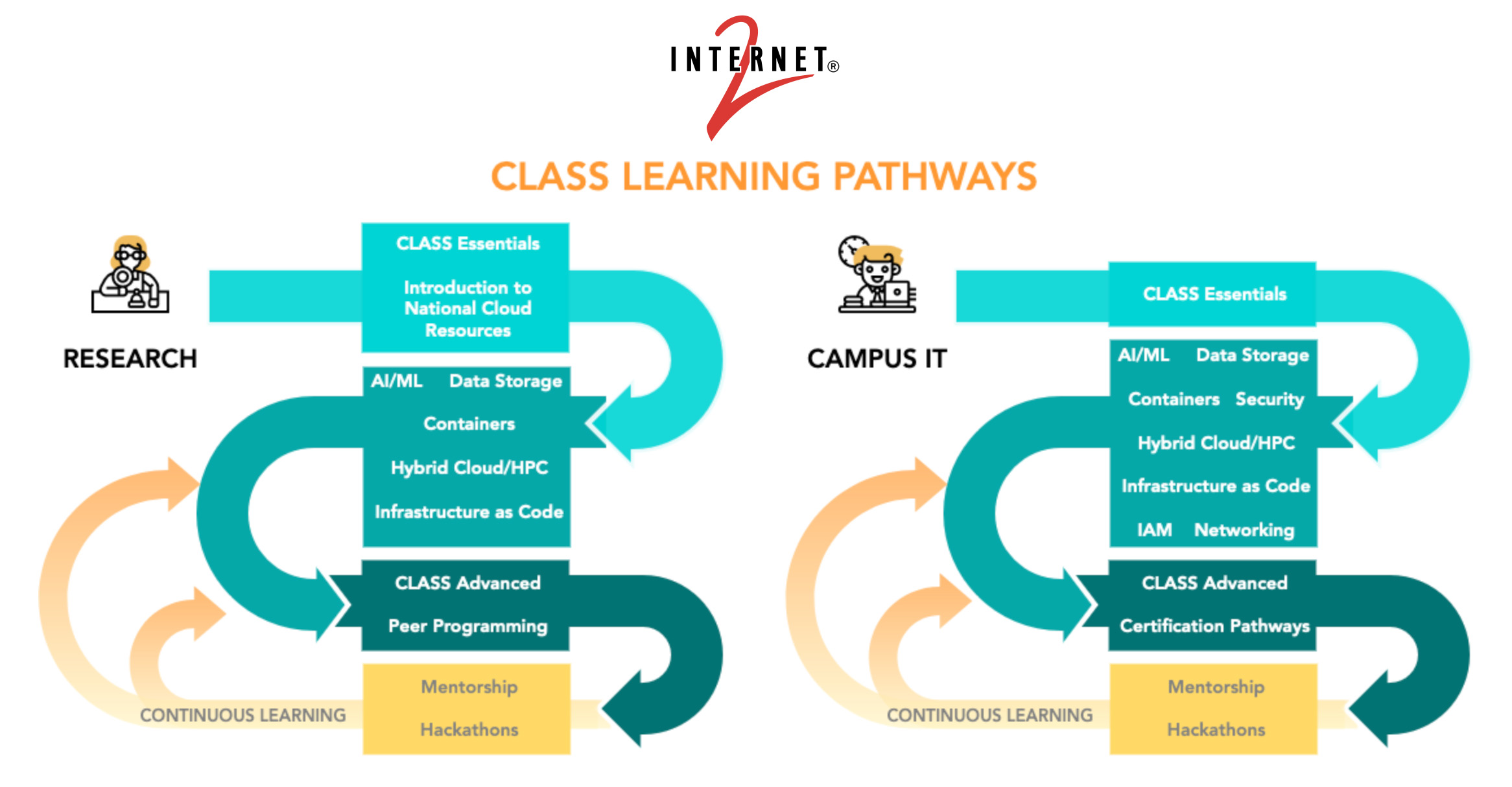Internet2's CLASS: Helping Researchers Move Forward with the Cloud
A Q&A with Amanda Tan
It's a familiar question: As higher education IT professionals who serve researchers and enable their work, how can we attract those researchers to the cloud? How can we help them become more productive with cloud services on our campuses?
Internet2's Cloud Learning & Skills Sessions (the CLASS program) offers the perfect venue for researchers and IT professionals to come together to foster cloud learning and adoption in the research and education community.
Amanda Tan is Internet2's research engagement program manager for CLASS, and as a former senior data science fellow, cloud technology lead, and research scientist at the University of Washington's eScience Institute, she's been a long-time champion of cloud learning for research settings. CT asked her how the CLASS program can help the higher education and research community navigate the quickly changing cloud knowledge base.

From CLASS Essentials to CLASS Advanced, Internet2's Cloud Learning & Skills Sessions can provide a cloud learning pathway for any skill or knowledge level. (Image courtesy Internet2. With permission.)
Mary Grush: What is Internet2's CLASS program and how does it work towards its objectives?
Amanda Tan: Originally CLASS was offered primarily as a cloud training program to help people who support research. It was specifically for research facilitators and other research computing and data professionals who needed to develop cloud skills.
That was about three and a half years ago. Since then, the CLASS program has evolved to include more comprehensive scientific computing skills. It now incorporates additional research computing tools and technologies that the research and higher education community can utilize — usually in the cloud, but with an eye toward holistic scientific workflows — to arrive at bigger and better science, faster.
So the cloud, coupled with other relevant technologies, is a means to an end — it's not seen as an end in itself. The focus is to help people step up to scientific research challenges and respond to those challenges better and faster.
The cloud, coupled with other relevant technologies, is a means to an end… to help people step up to scientific research challenges and respond to those challenges better and faster.
Grush: In general, what formats do you use to facilitate and structure your CLASS meetings?
Tan: Right now most of our offerings are virtual, but highly interactive, with a clear pathway for learners. We are, as our central goal, democratizing access to cloud learning. And that's not just one of many goals. It is truly the core of our foundational tenets of what CLASS is. We want to make the cloud more accessible for everyone in the community. And so, for us, as we develop CLASS programs, it's all about building a pathway for beginning all the way to advanced learners.
We are, as our central goal, democratizing access to cloud learning.
CLASS is made up of four different learning modules. It starts with CLASS Essentials, which is a foundational workshop that gets you "from zero to cloud." If you're starting with very little to no cloud experience, knowledge, or skills, this is where you can get, in just three hours, a basic understanding of what you're able to do in the cloud.
That foundational program is open to anyone who works in a higher education research environment. Its curriculum is very researched-focused and higher ed-specific.
After you've passed through the foundational module, we have several different programs at the intermediate and advanced levels. These include three- and four-hour workshops that are targeted to specific skill sets learners will need to develop to use the cloud effectively or to leverage some of those related research computing tools I mentioned earlier that enable researchers to do their science. Those include tools like containers, infrastructure as code, and artificial intelligence and machine learning pipelines.